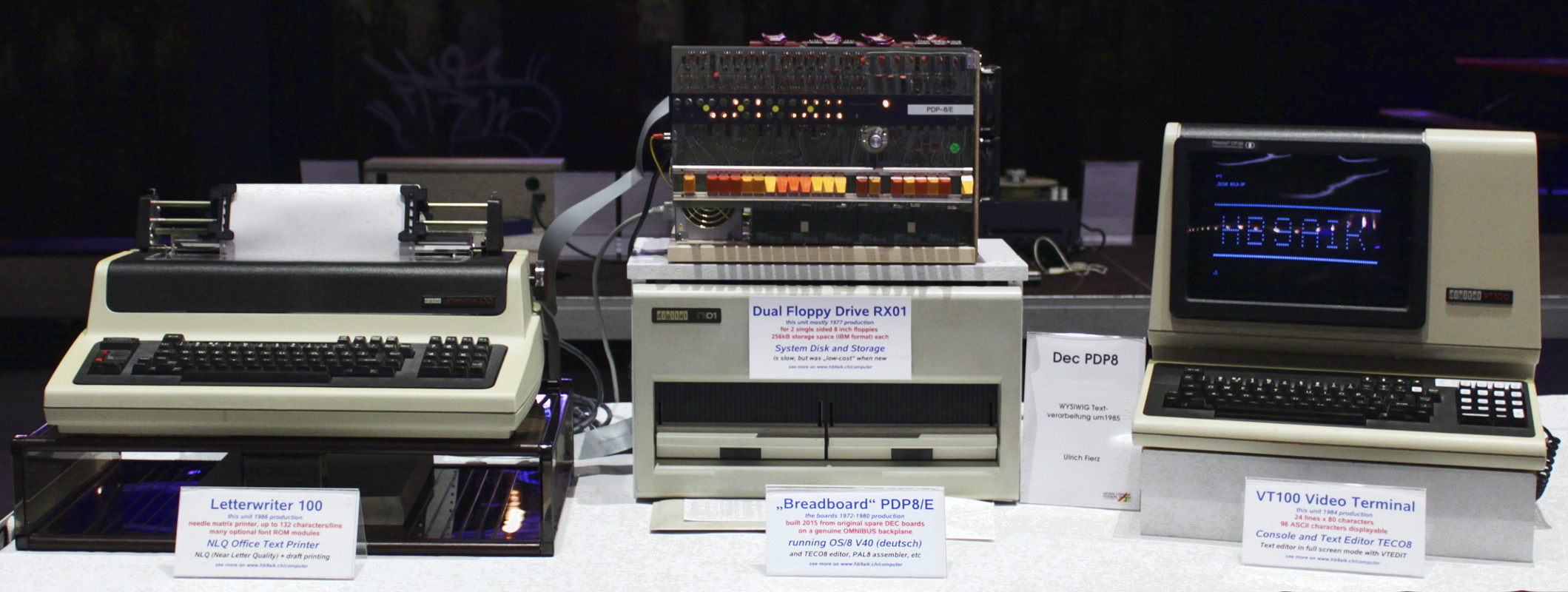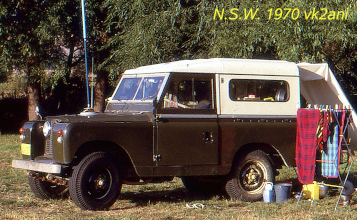My Display at the VCFE/CH 17 in Zurich
My idea for this year's show was to demonstrate a working PDP-8 environment where programming activities such as text editing, assembling and printing could be shown. Some work was needed to reach that target but it was luckily successful and caused considerable interest.
Hardware
The presentation was centered on my "Breadboard" PDP-8/E coupled with genuine DEC peripherals into a working environment:
- RX 01 dual floppy drive as mass storage system (2x 256kB)
- VT 100 video terminal as operator's console and text editing terminal (RS232 2400Bd)
- Letterwriter 100 as line printer using folded "endless" paper (RS232 600Bd)
The PDP-8/E has 32kW of semiconductor memory and is powered by modern switching power supplies. The remaining cards however are all original DEC, manufactured between 1972 and 1980 and came from my spare parts box - not all of them initially working of course. The non-DEC LPT card shown in the top view of the machine was replaced by a standard KL8-J for the Letterwriter 100 and the VT 100 connected to the KL8-J directly and the VT6 PC-interface disconnected.
Note: the naked 8/E computer has since received a nice replica front-panel: see the new picture here!

My display Saturday morning ready for the public and for 2 days of faultless performance
Software
The basis software was OS/8 V40, the operating system version originally prepared by Dataplan, which can be configured to the German language. This was considered an advantage for the public here in Zurich. Although somewhat limited by the capacity of the floppies a text editing and programming environment was demonstrated as planned.
TECO8 V40 together with VTEDIT was used for editing and the keys on the VT 100 labeled with the direct functions made possible by VTEDIT. A small sample program was edited and then assembled using PAL8 V40 and a listing produced and stored on the second floppy drive. This listing could then be printed on the Letterwriter 100, which was driven using my own handler. This is derived from KL8 but provides XON/XOFF and A4 form handling to always start printing at top of form and includes a gap so as not to print over the perforation should the source be unformatted.
